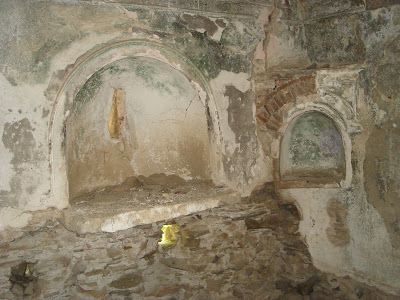 There has been a lot of loose talk of late about pagan Christianity. I want to say from the outset that most of this sort of rhetoric about pagan Christianity, and it is rhetoric, is either false, or based on half truths. One of the more frequent parts of this discussion has to do with the origins of some of our modern Christian celebrations such as Christmas.
There has been a lot of loose talk of late about pagan Christianity. I want to say from the outset that most of this sort of rhetoric about pagan Christianity, and it is rhetoric, is either false, or based on half truths. One of the more frequent parts of this discussion has to do with the origins of some of our modern Christian celebrations such as Christmas.
It is sometimes said that this celebration, and its mythology is not based in the Bible or anything historical or particularly Christian. Some go even further in arguing that Christmas is just an adaptation of the pagan Saturnalia, the reversal festival of the Romans which climaxed on and just after the winter solstice on Dec. 21. This latter claim is false, since Christmas has always been celebrated after the Saturnalia was already over, and in the case of the Orthodox church, long after the Saturnalia was over. But my concern in this post is with the man himself– jolly ole St. Nick.
Whether you call him St. Nick (short for Nickolas) or Santa Claus ( a barbarization and abbreviation of Saint Nik Claus) we are indeed talking about a real Christian person, Nicholas of Myra.
Notice in the icon above the dominant color of his garb— a red suit, more particularly a red robe. Hmm, I wonder where the idea that St. Nick wore red came from? How about from ancient Christian tradition, which is probably right, knowing what we know about the early bishops of the church in the 3rd and 4th centuries in this region and what they wore.
The pictures on this blog post were taken at Priene where there is an 18th century Greek church ruin, and before that a much earlier church built in honor of the real St. Nick. But again, who was he?
Nicholas, while he died in Myra, was in fact born in the Turkish town of Patara, somewhere around 270 A.D. He died on Dec. 6th 343, and that date is his feast day, which is one reason he is connected with the celebration of Advent and Christmas. He was raised by his uncle, also known as Nicholas who was a bishop of the church, and he was raised to be a holy man, but most importantly he was known as a generous person, and more particularly a giver of secret or anonymous gifts to person. He was also known as a miracle worker. You can immediately see the relevance of all this for the celebration of Christmas. One more fast fact of relevance to the American celebration of Christmas. In 1809, the New York Historical Society convened and named Sancte Claus the patron saint of Nieuw Amsterdam, the Dutch name for New York.
The pictures in this blog post, as I said, are of the church in Priene which celebrated and honored Nicholas. What is really remarkable about this is that Nicholas was never formally canonized, never formally declared a saint of the church, but he was so popular with Christian lay persons, that he was not only honored with a feast day, but had churches built in his honor and named after him, such as this one.
One of its more interesting features of this particular Church of St. Nick is the charnel house, or as it is called on the sign the Osteofilak– the place where the bones of the monks were placed after they died. For a church that has been derelict for 150 or so years, it is remarkable that its painted friezes and dome still show some original color, and the bell tower is still in tact.
 Bottom line, yes Virginia there really was a Santa Claus who gave gifts to others in honor of the Christ child, make no bones about it 🙂 The rumors of an amalgam of paganism and Christianity early on in church history are in fact largely false. Consider these pictures and this post my not so anonymous gift to you all, in his honor. Merry Christmas, half way through the year.
Bottom line, yes Virginia there really was a Santa Claus who gave gifts to others in honor of the Christ child, make no bones about it 🙂 The rumors of an amalgam of paganism and Christianity early on in church history are in fact largely false. Consider these pictures and this post my not so anonymous gift to you all, in his honor. Merry Christmas, half way through the year.










